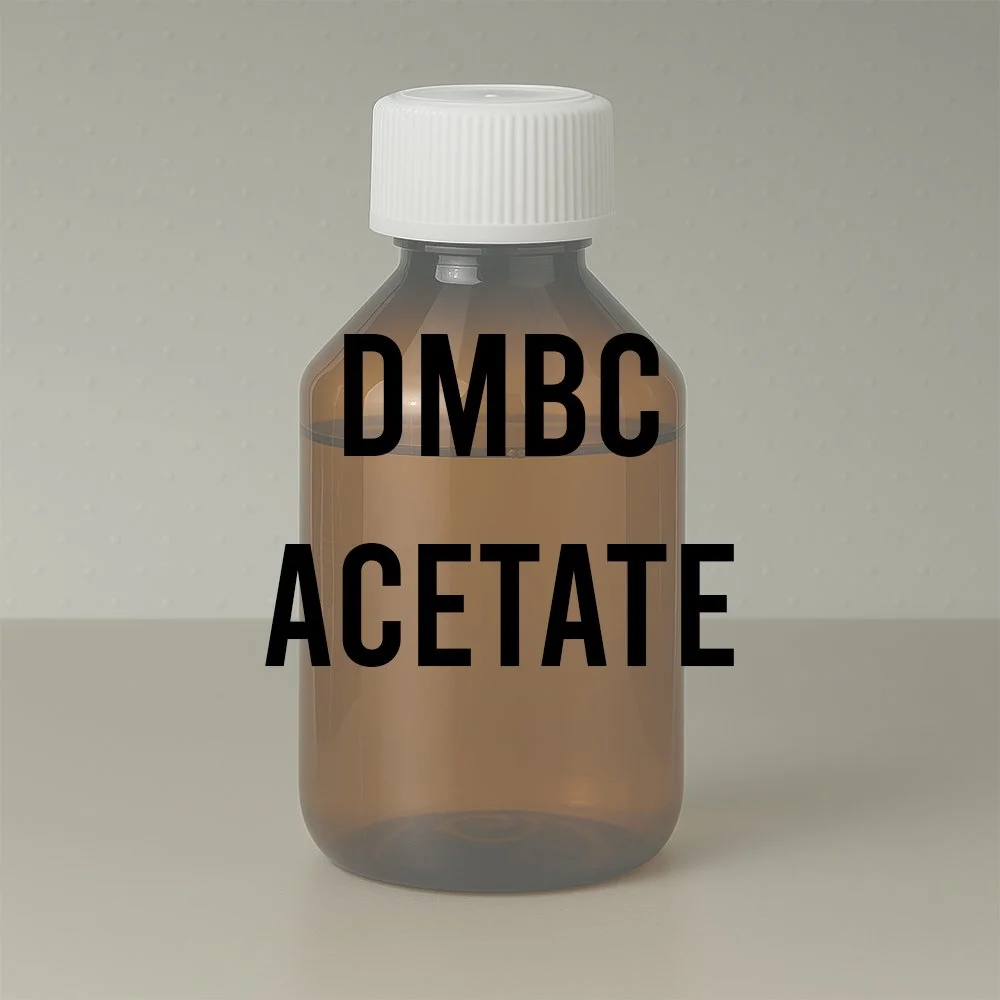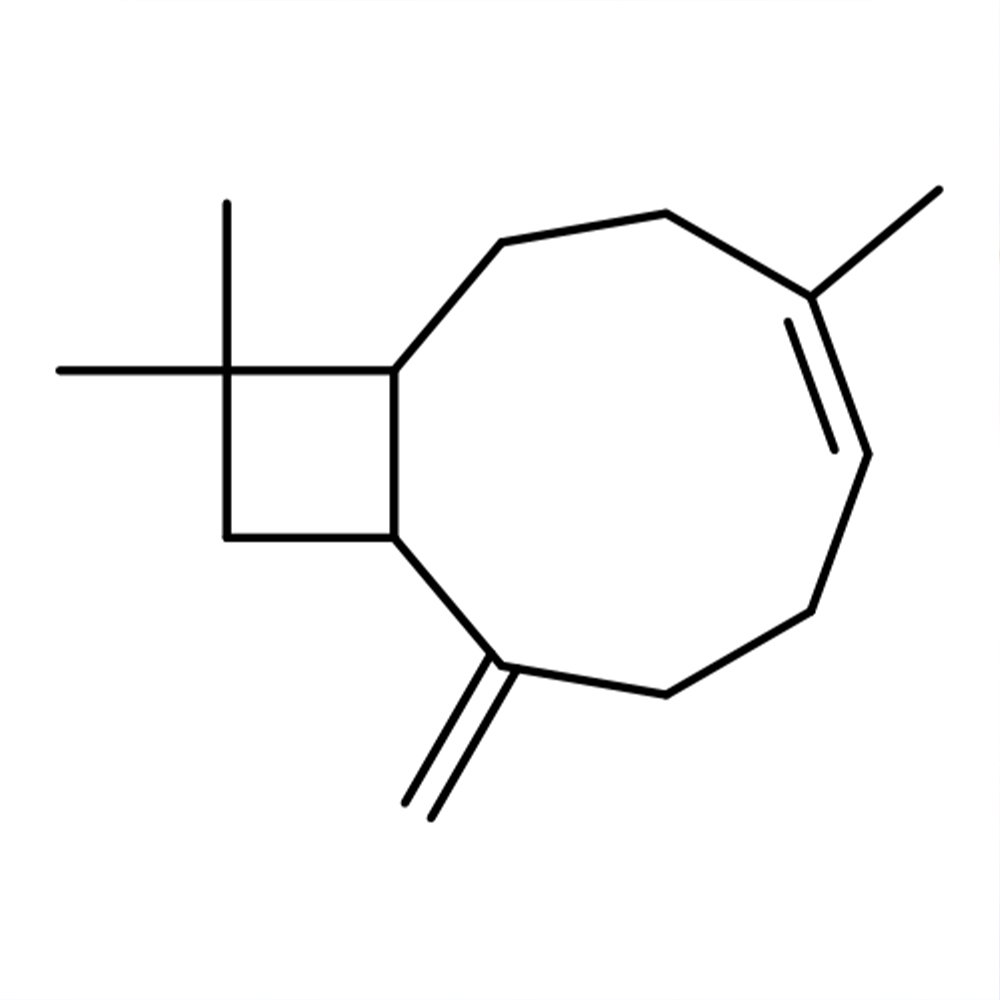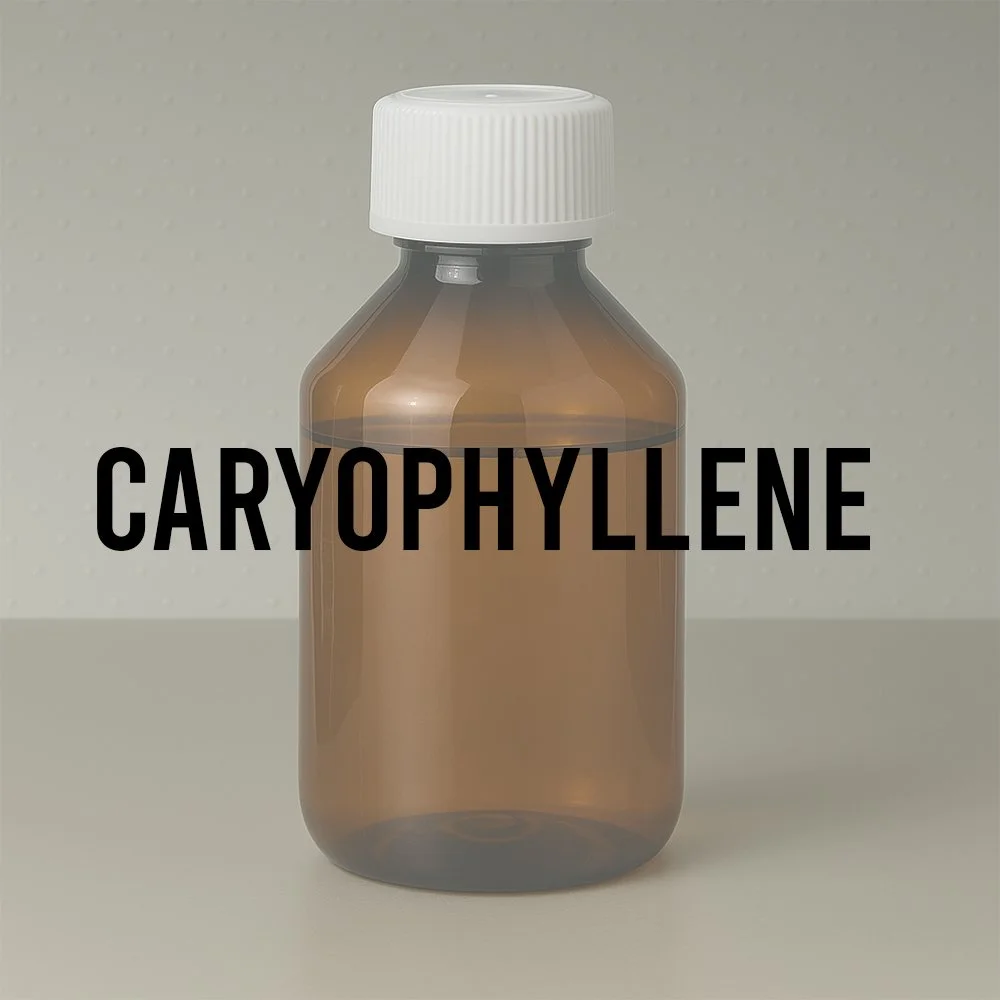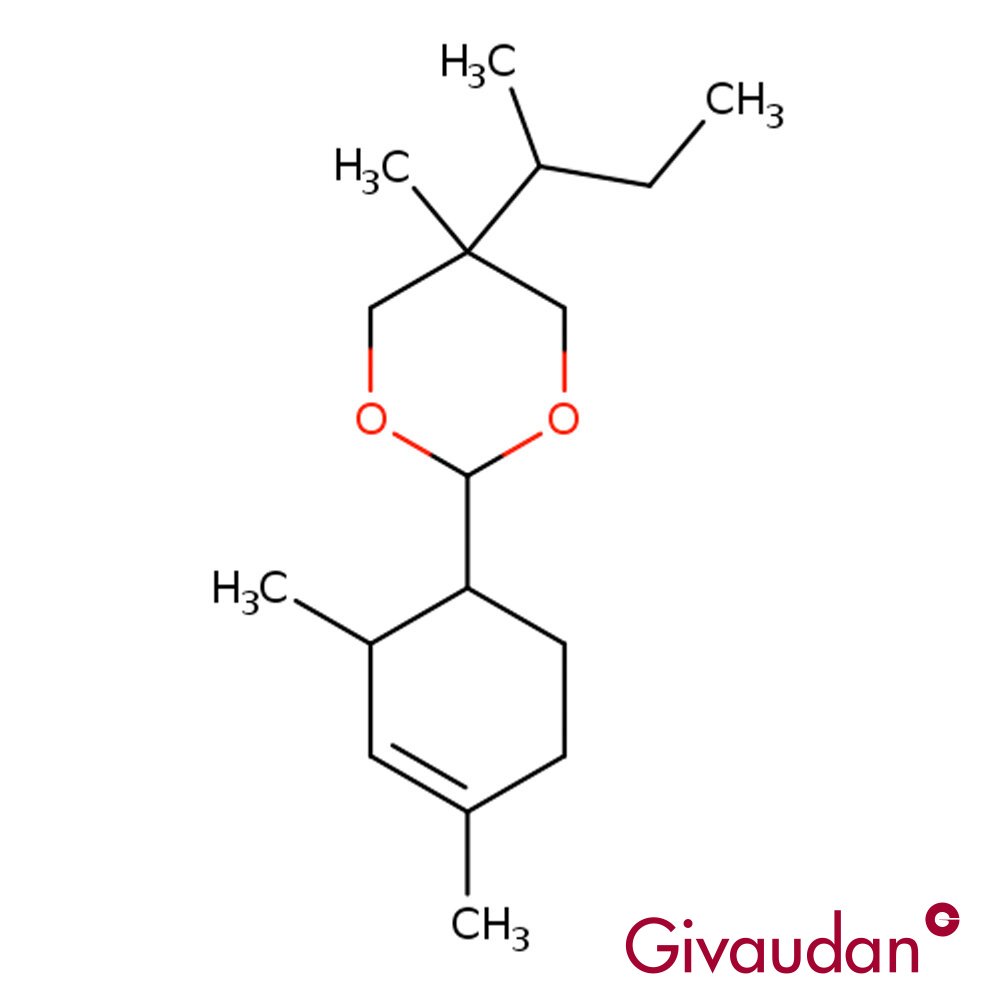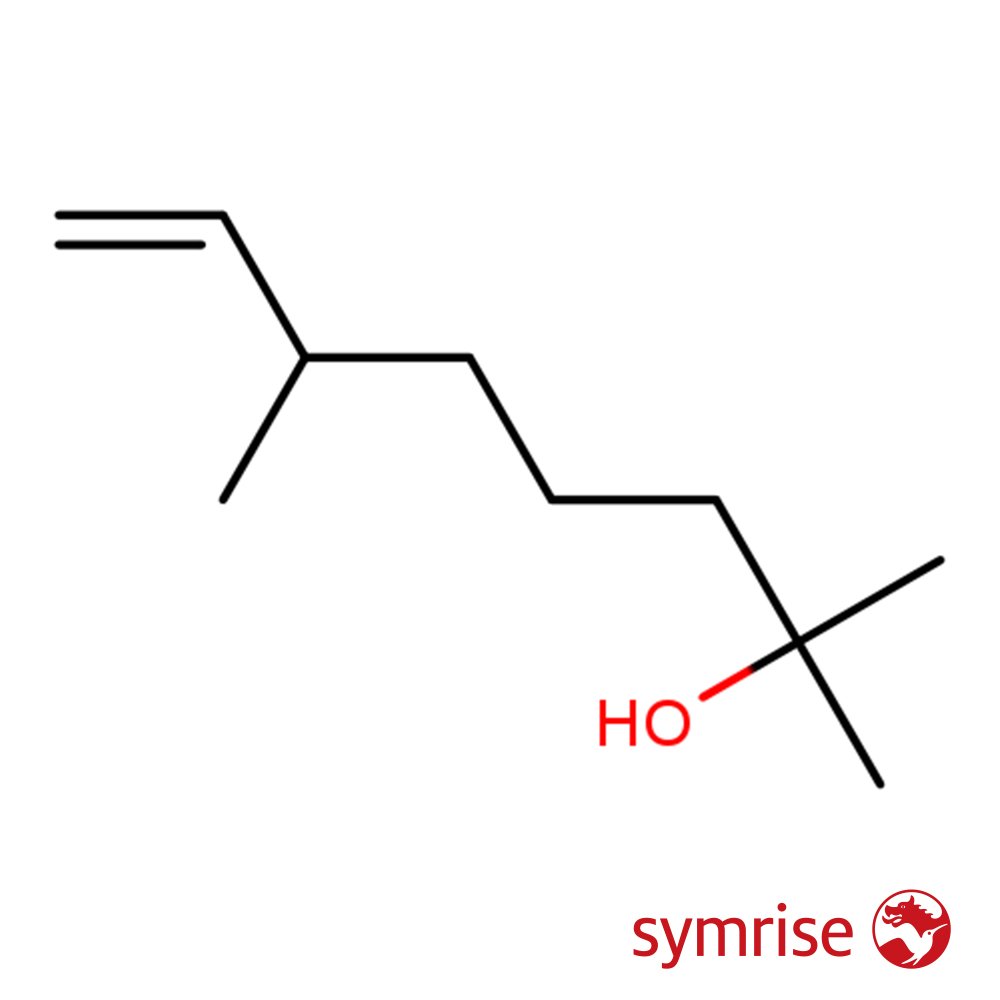Dimethyl Benzyl Carbinyl Acetate (DMBC acetate) technical Ingredient Overview
🔎 Chemical Name — 2-Methyl-1-phenylpropan-2-yl acetate
🧪 Synonyms — DMBCA, α,α-Dimethylphenethyl acetate, Benzyldimethylcarbinyl acetate, Dimethylbenzylcarbinol acetate, 1,1-Dimethyl-2-phenylethyl acetate, 2-Benzyl-2-propyl acetate
📂 CAS Number — 151-05-3
📘 FEMA Number — 2392
⚖️ Molecular Weight — 192.26 g/mol
📝 Odor Type — Floral-fruity
📈 Odor Strength — Moderate (5/10)
👃🏼 Odor Profile — Sweet, floral-fruity aroma with distinctive jasmine, rose, and pear facets. Green, fresh top notes with herbaceous undertones. Woody, powdery dry-down with lily of the valley, muguet, and hyacinth characteristics. Subtle honey and rhubarb nuances
⚗️ Uses — Floral perfume compositions (jasmine, rose, lily of the valley, gardenia, muguet, geranium, hyacinth), fruity accords, chypre bases, oriental fragrances, soap perfumes, cosmetic fragrances, functional perfumery, flavor applications (FEMA approved)
🧴 Appearance — Colorless to pale straw oily liquid; can crystallize to translucent solid at room temperature (melting point 29-30°C)
What is Dimethyl Benzyl Carbinyl Acetate?
Dimethyl benzyl carbinyl acetate (DMBCA) is a synthetic aromatic ester widely used in fine fragrance and flavor applications. The compound belongs to the family of benzyl alcohol derivatives and represents one of the most important members of the dimethylbenzylcarbinol series (Pybus & Sell, 2006).
Chemically classified as an acetate ester with the molecular formula C₁₂H₁₆O₂, DMBCA is characterized by its phenethyl backbone with two methyl substituents at the alpha position. The compound exists as a colorless to pale liquid at ambient temperatures, though it exhibits a tendency to crystallize at room temperature due to its melting point of approximately 29-30°C (Ventos, n.d.).
DMBCA is not found naturally in essential oils or botanical sources, making it entirely synthetic in origin. Its production represents a significant achievement in synthetic organic chemistry, offering perfumers access to complex floral-fruity notes that would otherwise require expensive natural extracts.
Historical Background
The development of dimethyl benzyl carbinyl acetate is intrinsically linked to the benzyl chloride chemistry that emerged in the early 20th century. According to Pybus and Sell (2006), DMBCA is prepared through the Grignard addition of benzyl chloride to acetone, yielding dimethylbenzylcarbinol as an intermediate, which is subsequently acetylated to produce the final ester.
The compound emerged as "the most important member of the family" among dimethylbenzylcarbinol derivatives, earning its widely recognized acronym DMBCA (Pybus & Sell, 2006, p. 106). The synthesis pathway represented a significant advancement in fragrance chemistry, as it provided an economical route to benzyl chloride derivatives that could mimic expensive floral notes.
The industrial synthesis utilizes benzyl chloride, a major product from the chlorination of toluene under radical conditions. This benzyl chloride serves multiple purposes in the fragrance industry, with benzyl acetate—the major component of natural jasmine oils—being another critical derivative. The acetylation of dimethylbenzylcarbinol with acetic anhydride yields DMBCA, establishing an efficient manufacturing process that has remained largely unchanged since its commercial introduction.
By the mid-20th century, DMBCA had established itself as an indispensable ingredient in jasmine bases and became a staple in better-quality soap perfumes and cosmetic fragrances, as documented in classical perfumery literature.
Olfactory Profile
Scent Family: Floral-fruity with green facets
Main Descriptors: DMBCA presents a sweet, complex aroma profile combining floral elegance with fruity brightness. The scent opens with jasmine and rose characteristics, accompanied by distinctive pear, peach, plum, and cherry notes. A fresh green aspect provides lift and naturalness, while subtle herbaceous and rhubarb nuances add complexity. The heart reveals lily of the valley (muguet), lily, and hyacinth florality, with powdery undertones. The dry-down exhibits woody characteristics with subtle honey and sugar sweetness.
Intensity: Moderate strength rated at 5/10, though characterized as "powerful" in specific applications. The compound demonstrates balanced behavior with proportional impact in blends (5/10 blend impact).
Tenacity: Exceptional longevity, lasting over 44 hours on smelling strips. Functions effectively as a fixative in floral compositions.
Volatility: Middle to base note character. The compound exhibits slower evaporation rates compared to top note materials, contributing substantivity to compositions.
Fixative Role: DMBCA serves dual purposes as both an odor contributor and fixative. It enhances the longevity of volatile floral notes while providing rounding and depth to compositions. Particularly effective in soap perfumes due to its fiber-substantive properties.
Applications in Fine Fragrance
DMBCA plays a versatile role across multiple fragrance categories. It is widely used in floral compositions, particularly jasmine, rose, muguet (lily of the valley), gardenia, geranium, and hyacinth bases. The material functions as both a primary floral note and a modifier that adds fresh, fruity-floral nuances to rose accords.
In contemporary perfumery, DMBCA serves as a bridge ingredient connecting fruity top notes with floral hearts. Its pear-jasmine character creates seamless transitions between olfactory families, while its clean, uplifting quality enhances white floral compositions. The compound is essential in creating elusive white floral lift that perfumers seek in gardenia reconstructions.
The material excels in chypre compositions, adding floral complexity to the classic oakmoss-labdanum-bergamot structure. In oriental fragrances, it provides fresh counterpoints to heavier resinous and spicy notes. DMBCA is commonly used in fruity accords, where its natural fruitiness complements synthetic and natural fruit notes.
Average usage in perfume compounds ranges from 0.07% to 5.3%, with typical concentrations around 1.3%. The material blends exceptionally well with its parent alcohol (dimethylbenzylcarbinol) and homologue esters, as well as with para-tertiary-butyl cyclohexyl acetate and similar materials.
Performance in Formula
DMBCA demonstrates predictable and versatile blending behavior in perfume formulations. The compound exhibits moderate odor strength (5/10) with proportional impact in blends (5/10), making it a reliable building block that doesn't dominate compositions while providing substantial character.
The material shows excellent compatibility with both natural and synthetic ingredients. It pairs particularly well with phenoxyethyl isobutyrate, forming the basis for sophisticated fruity accords. When combined with its parent alcohol (dimethylbenzylcarbinol), DMBCA creates rich, multidimensional floral effects.
In functional applications, DMBCA demonstrates excellent performance in soap-based systems, where its stability and fiber-substantivity ensure lasting fragrance on fabrics and skin. The compound maintains its olfactory character across pH ranges typical in cosmetic and household product formulations. Its solid-to-liquid phase transition at approximately 29-30°C requires consideration during formulation; commercial suppliers often provide the material diluted at 50% in isopropyl myristate (IPM) to facilitate handling.
The material's diffusion characteristics ensure smooth transitions within fragrance structures, allowing perfumers to craft sophisticated, multidimensional compositions. Its substantivity contributes to fragrance longevity without creating heaviness or cloying sweetness.
Industrial & Technical Uses
Beyond fine fragrance, DMBCA finds extensive application in functional perfumery, including detergents, fabric softeners, household cleaning products, antiperspirants, shampoos, and bath products. The compound's stability in alkaline systems makes it particularly suitable for soap perfumes and powder formulations.
FEMA approval (FEMA 2392) qualifies DMBCA for use in flavor applications, where it contributes floral and fruity notes to food products. The material is used in liqueur flavoring and in applications requiring sweet, floral-fruity character.
Physical Properties:
Density at 20°C: 0.996-1.004 g/mL
Refractive index (nD20): 1.4900-1.4950
Flash point: 103°C
Solubility: Insoluble in water; soluble in ethanol, oils, and most organic solvents
Assay: >98% (GC)
Tariff number: 2915390090
EINECS: 205-781-3
Storage Considerations: Store in tightly closed containers in cool, dry conditions protected from light. Epoxy-coated drums should be avoided as the compound attacks this lining. Quality should be verified when stored for more than 24 months (Ventos, n.d.).
Regulatory & Safety Overview
IFRA Status: No restrictions under IFRA Amendment 51 for Category 4 (hydroalcoholic and oil-based personal care products). The material is approved for use in fragranced consumer products without specified concentration limits.
EU Cosmetics Regulation: Compliant with EU Regulation 1223/2009. The compound is not listed among prohibited or restricted substances in cosmetic products within the European Union.
FEMA Status: Approved for use in food applications under FEMA 2392. This designation confirms the material's acceptability as a flavor ingredient when used in accordance with good manufacturing practices.
Toxicology: Safety assessments indicate moderate toxicity by ingestion. The material is classified as a skin irritant. When heated to decomposition, it emits acrid smoke and irritating fumes (ChemicalBook, n.d.). Appropriate handling precautions should be observed in industrial settings.
Occupational Safety: Standard personal protective equipment recommended for handling aromatic esters. Adequate ventilation required in production areas. Material safety data sheets (MSDS) should be consulted for complete handling and emergency response information.
References
ChemicalBook. (n.d.). Dimethylbenzylcarbinyl acetate (CAS 151-05-3). Retrieved from https://www.chemicalbook.com/ChemicalProductProperty_EN_CB0697646.htm
Pybus, D., & Sell, C. (Eds.). (2006). The chemistry of fragrances: From perfumer to consumer (2nd ed.). Royal Society of Chemistry.
Ventos, E. (n.d.). Dimethyl benzyl carbinyl acetate - Technical data sheet. ERNESTO VENTÓS S.A. Retrieved from https://www.ventos.com

